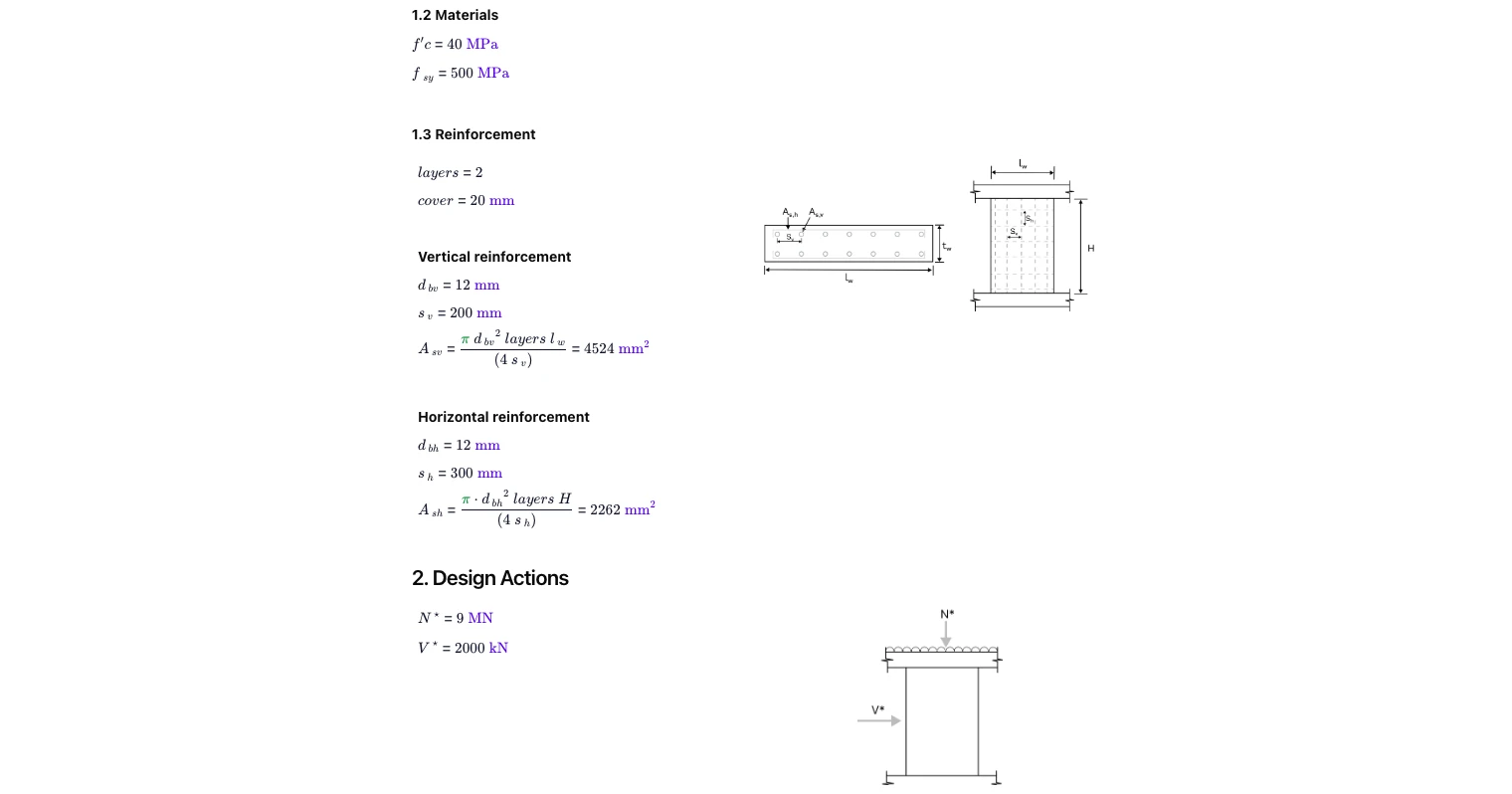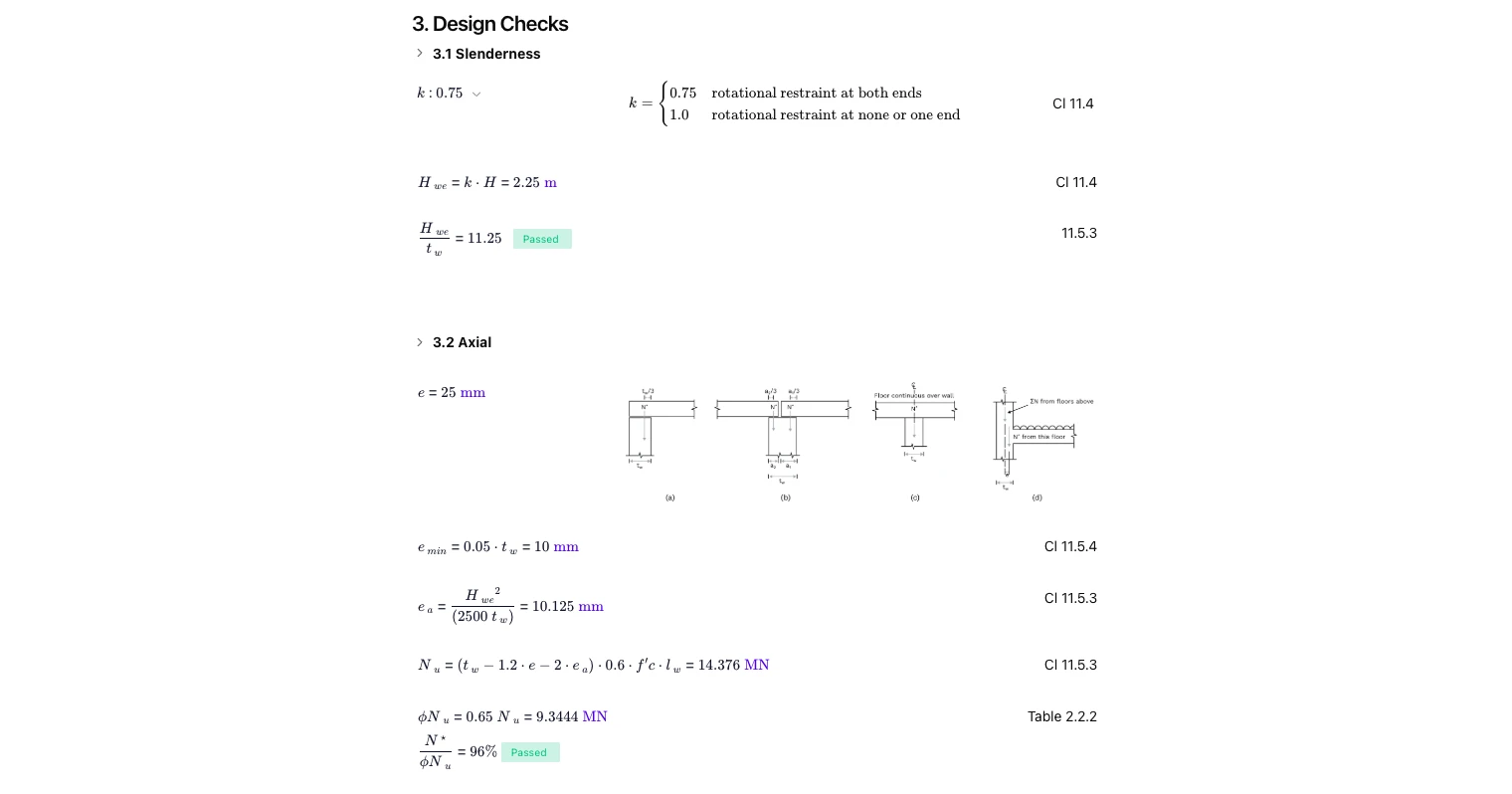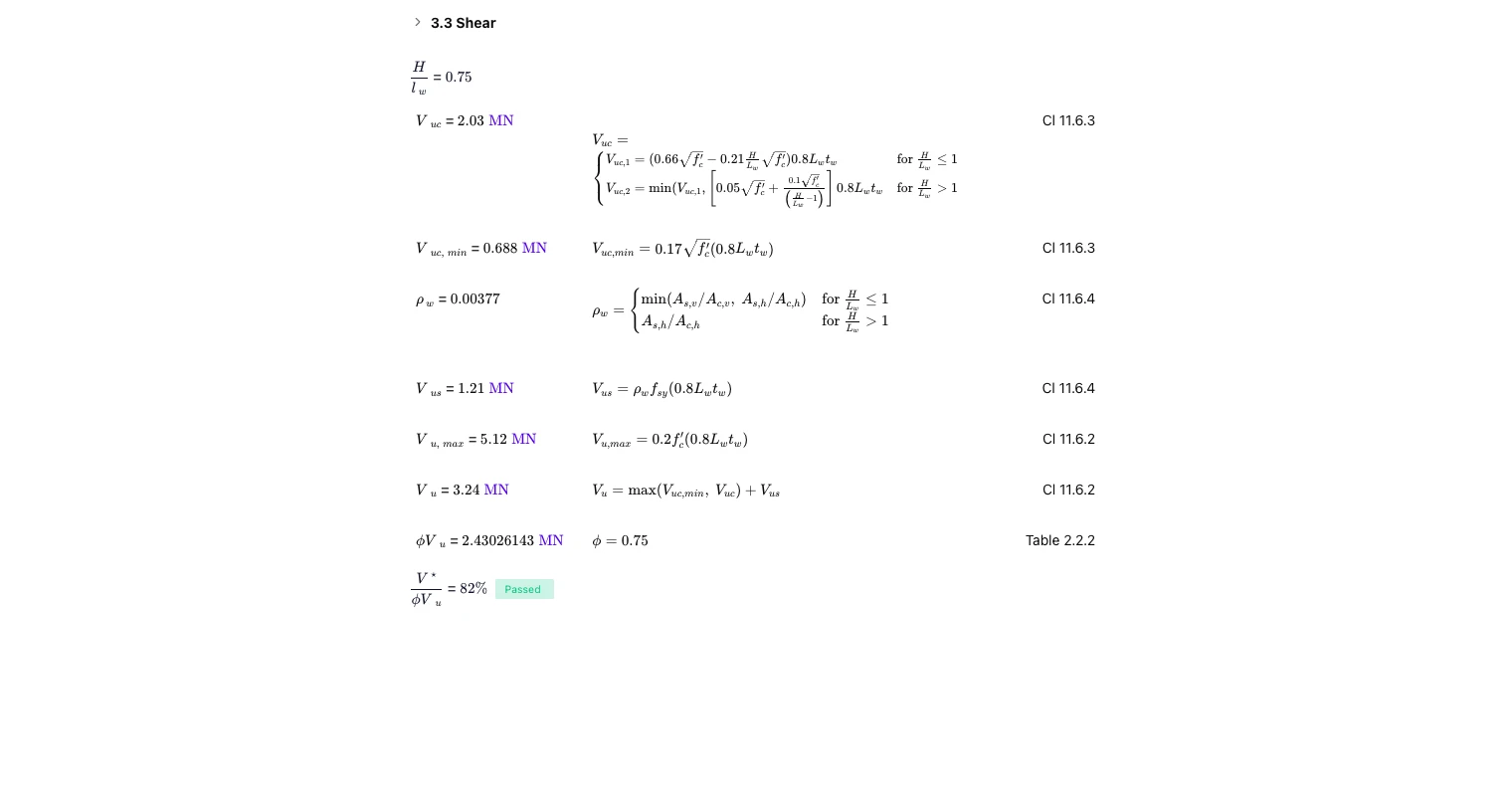Engineering-grade Concrete Braced Wall Calculator to AS 3600. Calculate slenderness, axial and shear per Section 11 and download as a report.

This template is not available yet. You can sign up and create it yourself!
Or let us know if you'd like to be notified when it’s ready:
About this Concrete Braced Wall Calculator
This calculator performs capacity checks for a concrete braced wall to AS 3600:2018 Section 11 (simplified method). It verifies slenderness, axial capacity and shear capacity and provides a clear utilisation summary with pass/fail statuses.
- Structural engineer — run fast compliance checks for braced walls in buildings and produce a results summary for review and reporting.
- Design checker / peer reviewer — validate slenderness, axial and shear against code clauses with transparent formulas and references.
- Civil/structural CAD/BIM lead — capture the governing inputs and reinforcement schedules to keep drawings aligned with verified numbers.
Built in CalcTree, this is an engineering-grade calculator with explicit clause references, unit handling and a results table you can share or embed across projects.
More info on Concrete Braced Wall Calculator to AS 3600
Inputs captured
Define wall geometry (length, thickness, height), boundary condition factor for effective height, materials (concrete strength, reinforcement yield), reinforcement (vertical and horizontal bar diameters, spacing, number of layers, cover), and design actions (factored axial load and in-plane shear). A simple sketch clarifies all symbols so model assumptions are unambiguous.
Outputs reported
The tool returns a results summary listing each design check (slenderness, axial, shear), the governing parameter/capacity, utilisation ratio, and pass/fail status. Detailed sections expand to show intermediate terms (effective height, eccentricities, reinforcement ratios, concrete and steel shear components) and the design phi-reduced capacities used for comparison.
Design checks performed
- Slenderness: evaluates effective height from a restraint coefficient and checks the code slenderness limit against wall thickness.
- Axial (compression): computes accidental and additional eccentricities, then evaluates nominal axial capacity with the rectangular stress-block per AS 3600 Section 11, applying the relevant capacity reduction factor before comparing to design axial action.
- Shear: determines concrete shear capacity (with a minimum threshold) and shear reinforcement contribution using reinforcement ratio and yield strength. Caps concrete shear at the code maximum, sums with steel contribution, applies phi, and compares to design shear.
Each sub-calculation cites the corresponding AS 3600 clauses so reviewers can trace the logic.
Methods & references (AS 3600:2018)
The implementation follows Section 11 simplified wall design rules: effective height definition and restraint options, eccentricity limits, axial capacity expressions for braced walls, minimum concrete shear, reinforcement ratio formulation, maximum concrete shear limit, and phi factors from Table 2.2.2. Clause callouts appear alongside every step for quick checking.
Common Calculation Errors to Avoid
- Ignoring end restraint when setting effective height — using full wall height without the restraint coefficient can overestimate slenderness or axial capacity.
- Mixing design actions (factored vs. unfactored) — ensure the calculator’s inputs are factored consistently with AS 3600 load combinations.
- Under-reporting eccentricity — forgetting accidental and additional eccentricities will inflate axial capacity and mask a failing case.
- Using reinforcement area for one direction only — shear reinforcement ratio must reflect the minimum of vertical/horizontal arrangements to comply with AS 3600.
- Exceeding concrete shear cap — not applying the code maximum concrete shear before adding steel contribution can yield non-compliant results.
- Skipping phi factors — compare actions to phi-reduced capacities, not the nominal values.
Engineering templates
Common calculators
Design guides
Does this calculator follow AS 3600:2018 for braced walls?
Yes. It implements the simplified method in Section 11 with clause references at each step, including limits on slenderness, axial eccentricities, concrete/steel shear and the required phi factors.
What boundary conditions are supported?
You can select the rotational restraint condition at the wall ends to set the effective height factor. The calculator then checks slenderness against the code limit automatically.
How are shear components handled?
Concrete shear is evaluated with a minimum value and an upper cap per AS 3600. Steel shear is based on the reinforcement ratio and yield strength. The design capacity is the sum of capped concrete shear and steel shear, reduced by phi.
Can I document and share the results?
Yes. CalcTree provides a results summary plus detailed expansions you can export or embed in reports. See other examples like the Concrete Column to AS 3600 and Footing Design to AS 3600/AS 2870.
Can I link this with other RC checks?
Absolutely. Pair it with reinforcement detailing tools such as 'Reinforcement Development Length Calculator to AS 3600-2018', or add steel/weld checks like the 'Fillet Weld Group Analysis to AS 4100-2020' inside the same project page.
Learn about the benefits of using CalcTree on engineering projects!









